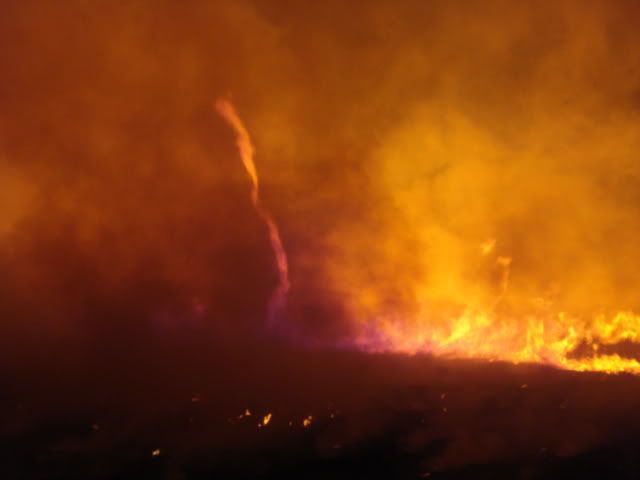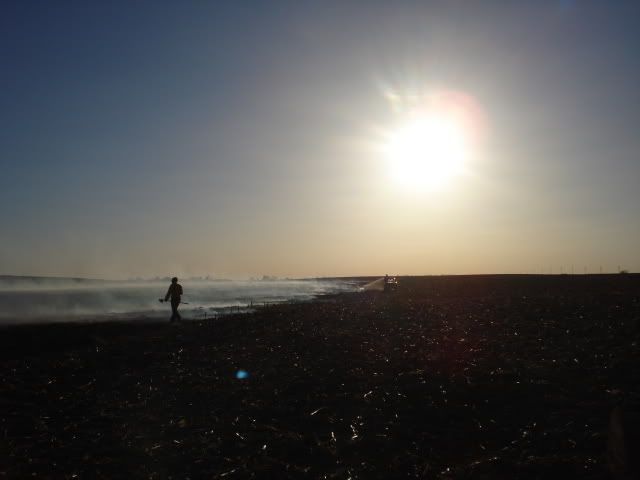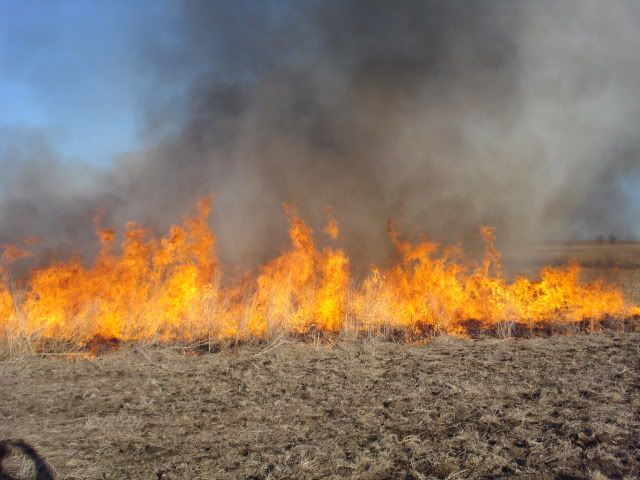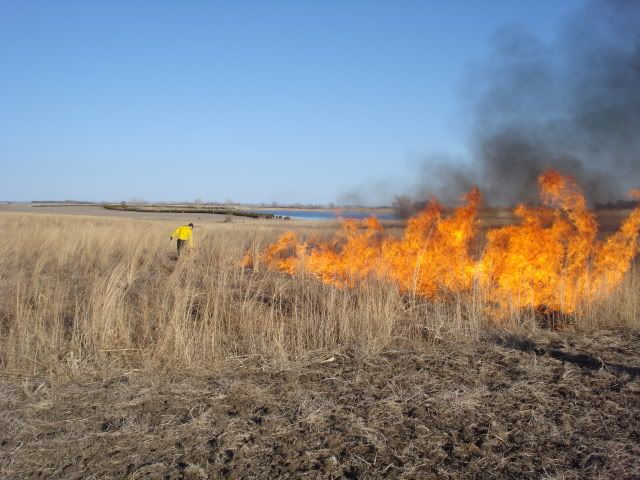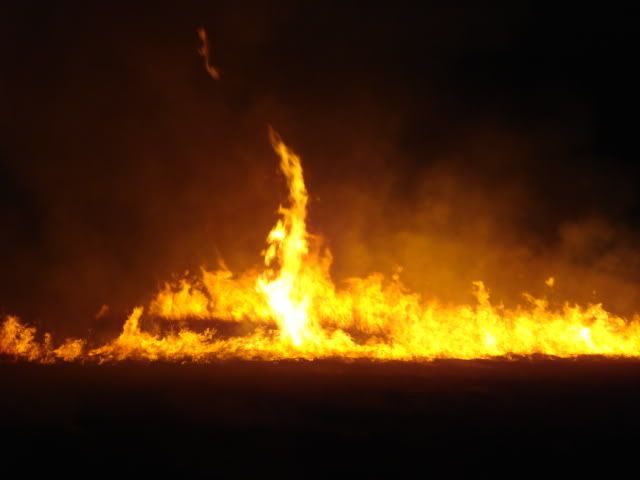SDJim, Tbear, Natty, I hope I can answer some of your questions. There are all levels of difficulty doing burns. Some are so easy that all you need is low wind from a certain direction and go out and light it. Others are more techincal, require more manpower and equipment, and require more stringent conditions to get done safely. Some wildland fire training is highly recommended to not only teach you how to burn, but also when and when not to burn. The first part of a "controlled burn" is knowing if you should and how to light the fire. There are some fairly basic rules: winds under 15mph and steady, no wind change predicted for 24 hours, relative humidity over 40%, always light into the wind, never leave a fire unattended, have enough equipment and manpower available to not only do the burn but to deal with an escape, there is never too much help or equipment, have a full soil profile of moisture, and HAVE A PLAN AND OBJECTIVE FOR THE BURN!!!
I like disked firebreaks. It speeds up everything and makes the safety aspect much higher. I plan my burns the fall before. I also start preparations in about August and September with mowing the fire breaks. When I have time and moisture after they are mowed, I disk and often double disk the fire breaks. You don't want tall flamables adjacent to your fire breaks. So if you have cedars or other flamable plants next to the break, cut them off and push them inward. Your fire breaks should be 5-10 times as wide as the grass is tall. Have a written plan on site and go over it with all helpers. Of special concern are the obvious hazards, avenues to escape if danger rears it's ugly head, and contacts for emergency services and adjoining neighbors. Proper equipment is a must. Good weather information can be gotten from the NOAA site with hourly conditions on the tabular forecast. Know your state's open lands burning law. Tell everyone not to wear any synthetic clothing! Make sure all equipment is in good repair. Having a truck, tractor, or ATV die in front of a head fire is a very lonely feeling! Be specific with your instructions to your help. If they can't follow them, dismiss them from the crew. No one goes inside the burn perimeter except the lighter and someone is assigned to watch that person at all times. By lighting into the wind, you don't have to worry about the fire overrunning you. If possible, use a drip torch! Your goal is to have a continuous fire line with no points, gaps, or lags. Straight fire lines act differently than crooked or incontiguous ones. Straight lines minimize vortecs and spot overs. Everyone on the crew should have a lighter on them. Best way to get out of a fire is by lighting fire and getting into the black. That's a worst case scenario, been there, done that! There is no fun in it and expect to get hurt.
In the spring, recheck your fire breaks. Check your fuel load and prepare your equipment. Call ahead and check on potential crew members. ASK about their health. Don't include members with heart problems. This is hard work and you need your help to not become a tragedy. Alert neighbors the day before the burn so they can close windows, pull laundry off of the line, and move anything that could be consumed in the event of an escape. Call the fire department or other required contacts to approve the burn. Get permits well ahead in required. Have a source for refilling water tanks. Be stingy with water. People like to play in it, tell them not to spray unless needed. Costs of a burn can be very low. NWSG cannot persist without fire as a management tool. Most areas will stay in optimum productive condition with a 3-4 year rotation. The more xeric your area, the longer the rotation can be. With established stands of CRP, it may take more disturbance than just fire to maintain the forb components of your habitat.
Tell me if I missed something!

